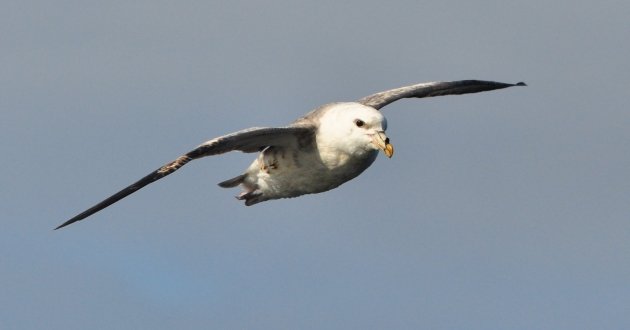
Splits, splits, splits. Birders, for the most part, love them. While many of us anxiously await the AOU’s decisions on some recently proposed splits (spoiler alert: I’m getting an armchair lifer and state bird in the form of a second species of Sage Sparrow), we are always looking on the horizon for future splits…and their dreaded counterparts, the lumps.
But don’t you worry, the “L” word will not be used again today. Hot off the presses is a study that conducted molecular analyses between the Pacific and Atlantic populations of Northern Fulmar. The authors put their findings bluntly in the abstract: “Genetic divergence between these populations is consistent with that observed between many species of Procellariiformes and we recommend elevating these two forms to separate species.”
There are visible differences between the two populations, such as Atlantic birds having lighter tails and heavier bills. This all bodes well for a new fulmar in the future! And for those worried that climate change may bring these two populations together, the authors note, “Divergence date estimates indicate that the Atlantic and Pacific populations may have persisted independently for nearly 2 million years, spanning over warm interglacial periods that may have drastically reduced ice cover (Anderson et al. 2006). Consequently, taxonomic boundaries within this genus warrant reconsideration and we would recommend elevating the Pacific population to a separate species.”
You can read the whole paper by Kerr and Dove right here. Both photographs are of the Pacific subspecies (Fulmarus glacialis rodgersii), taken offshore from Half Moon Bay, CA. Props to Alvaro Jamarillo for bringing this study to light.














Pacific Fulmar also muddies things as far as Southern Fulmar is concerned.